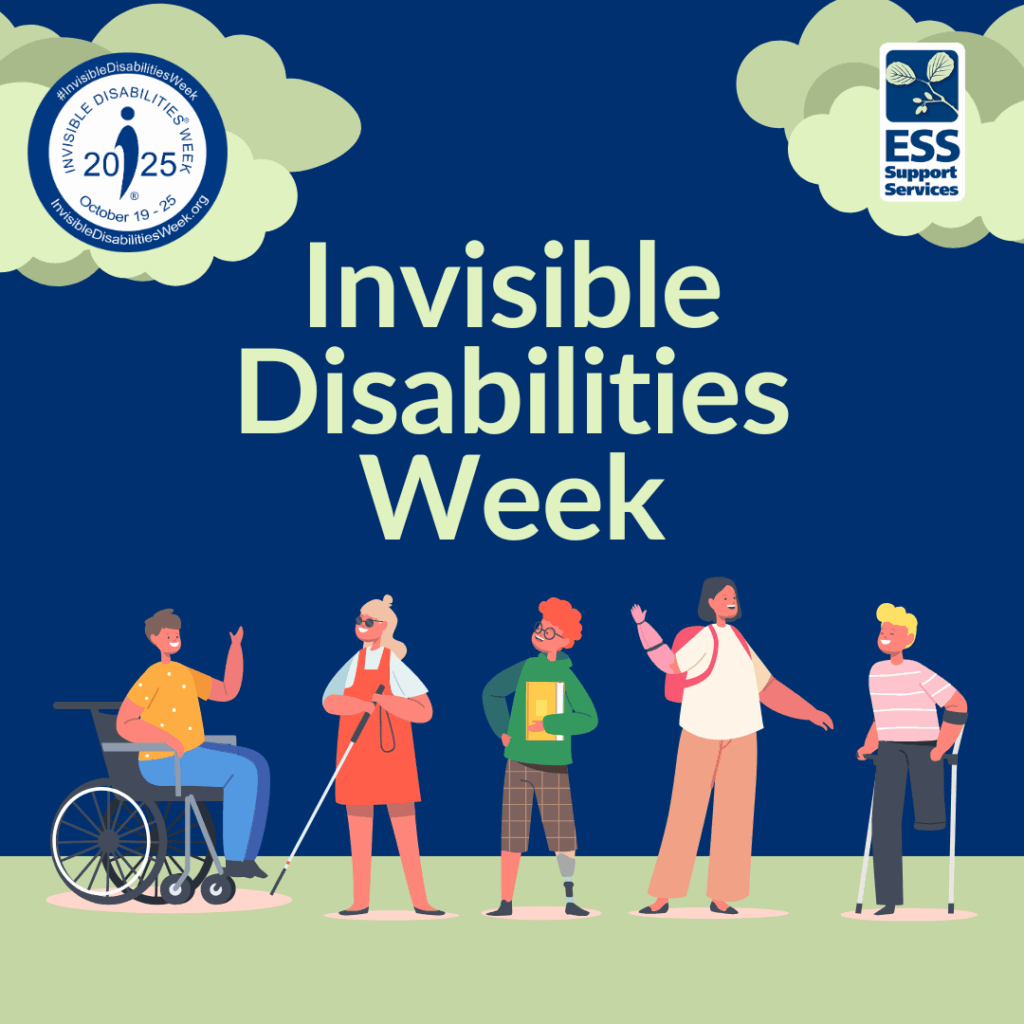Each year, during the third week of October, communities around the world come together to observe Invisible Disabilities Week—a time dedicated to raising awareness, promoting understanding, and supporting those living with disabilities that aren’t immediately visible.
What Are Invisible Disabilities?
Invisible disabilities, also known as hidden or non-visible disabilities, refer to physical, mental, or neurological conditions that are not immediately apparent to others. Unlike visible disabilities that may involve mobility aids or observable traits, invisible disabilities often go unnoticed, making life even more challenging for those affected.
Examples of Invisible Disabilities:
-
Chronic illnesses such as lupus, fibromyalgia, or Crohn’s disease
-
Mental health conditions like depression, anxiety, PTSD, or bipolar disorder
-
Neurological conditions, including epilepsy, ADHD, autism spectrum disorders, and traumatic brain injuries
-
Sensory disorders, such as auditory processing disorder or chronic migraines
-
Autoimmune diseases like multiple sclerosis or rheumatoid arthritis
- ESS Support Services offers a diverse range of high-quality services and accredited programs designed to support the independence, social well-being, and health of the seniors and older adults = who may or may not have disabilities.
These conditions can impact a person’s ability to work, study, communicate, or participate in daily life—often without others realizing the extent of the difficulty.
Why Invisible Disabilities Week Matters
Invisible Disabilities Week is about more than awareness—it’s about empathy, education, and action.
1. Raising Awareness
Many people living with invisible disabilities face misunderstanding, skepticism, or judgment. Because their challenges aren’t visible, they may be accused of exaggerating symptoms or using their condition as an excuse. This week helps shed light on their experiences and challenge those assumptions.
2. Promoting Inclusivity
By acknowledging the existence and legitimacy of non-visible disabilities, workplaces, schools, and public spaces can become more accessible and inclusive. This includes accommodating flexible work hours, quiet spaces, or alternate communication methods.
3. Fostering Compassion
The phrase “you don’t look sick” can be incredibly invalidating. Awareness weeks like this encourage people to believe and support others—even when they can’t “see” what they’re going through.
How to Support Invisible Disabilities Week
Here are a few meaningful ways to participate:
🧠 Educate Yourself
Discover the various types of invisible disabilities. Seek out books, articles, and firsthand stories from people with lived experience.
💬 Start Conversations
Utilize your voice and platforms—such as social media, blogs, classrooms, or community groups—to raise awareness and share accurate information.
🏢 Advocate for Accessibility
Encourage your school or workplace to consider invisible disabilities when designing policies or accommodations.
🧍♂️ Believe People
Practice empathy. If someone tells you they have a disability, believe them—even if you can’t see it.
Resources and Organizations
If you’d like to learn more or get involved, check out the following:
🏛️ Organizations & Advocacy
-
Invisible Disabilities Association (IDA) – Hosts Invisible Disabilities Week and provides educational tools and advocacy resources.
-
National Alliance on Mental Illness (NAMI) – Support and education on mental health conditions.
-
The Mighty – A platform where people share personal stories about health challenges.
-
Autistic Self Advocacy Network (ASAN) – Advocacy and resources for autistic individuals, by autistic individuals.
📚 Educational Articles & Tools
-
Job Accommodation Network (JAN) – Offers guidance on workplace accommodations for all kinds of disabilities.
Final Thoughts
Invisible Disabilities Week is a powerful reminder that not all disabilities are visible. By embracing empathy, listening without judgment, and advocating for inclusive spaces, we can create a more understanding and supportive world for everyone.
Let’s take this week—and every week—to believe and uplift those whose challenges we may not always see!
